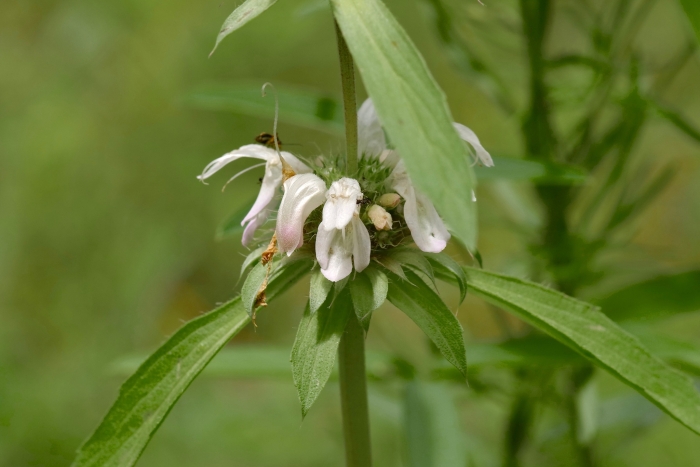Plains Bee Balm
(Monarda pectinata)
Plains Bee Balm (Monarda pectinata)
/
/

Michelle W.
CC BY 4.0
Image By:
Michelle W.
Recorded By:
Copyright:
CC BY 4.0
Copyright Notice:
Photo by: Michelle W. | License Type: CC BY 4.0 | License URL: http://creativecommons.org/licenses/by/4.0/ | Rights Holder: Michelle W. | Publisher: iNaturalist | Date Created: 2022-08-11T14:40:17-07:00 |

























Estimated Native Range
Summary
Monarda pectinata, commonly known as Plains Bee Balm, is a perennial herb native to prairies, plains, and open woodlands in the central United States. It typically grows up to 2 feet tall and features branching stems with narrow, lance-shaped leaves. From late spring to early summer, it produces showy clusters of lavender to pink tubular flowers, which are highly attractive to bees, butterflies, and hummingbirds. The flowers are arranged in dense, rounded heads atop the stems and are known for their minty fragrance.
Plains Bee Balm is valued for its ornamental flowers and its ability to attract pollinators, making it a popular choice for native plant gardens, pollinator gardens, and naturalized areas. It is also used in traditional medicine by Native American tribes. This plant is drought-tolerant once established and prefers well-drained soils, although it can tolerate clay soils if drainage is adequate. It thrives in full sun but can tolerate light shade. Plains Bee Balm can spread by rhizomes, forming colonies, which makes it suitable for use as a ground cover. However, it can be susceptible to powdery mildew, especially in humid conditions or when airflow is poor.CC BY-SA 4.0
Plains Bee Balm is valued for its ornamental flowers and its ability to attract pollinators, making it a popular choice for native plant gardens, pollinator gardens, and naturalized areas. It is also used in traditional medicine by Native American tribes. This plant is drought-tolerant once established and prefers well-drained soils, although it can tolerate clay soils if drainage is adequate. It thrives in full sun but can tolerate light shade. Plains Bee Balm can spread by rhizomes, forming colonies, which makes it suitable for use as a ground cover. However, it can be susceptible to powdery mildew, especially in humid conditions or when airflow is poor.CC BY-SA 4.0
Plant Description
- Plant Type: Herb
- Height: 1-2 feet
- Width: 1-2 feet
- Growth Rate: Moderate
- Flower Color: Pink, Purple, White
- Flowering Season: Spring, Summer, Fall
- Leaf Retention: Deciduous
Growth Requirements
- Sun: Full Sun
- Water: Medium
- Drainage: Medium, Fast
Common Uses
Bee Garden, Butterfly Garden, Drought Tolerant, Low Maintenance
Natural Habitat
Native to prairies, plains, and open woodlands in the central United States
Other Names
Common Names: Pony Beebalm, Spotted Beebalm, Miners Lettuce, Plains Beebalm
Scientific Names: , Monarda pectinata, Monarda citriodora var. pectinata, Monarda nuttallii, Monarda penicillata,
GBIF Accepted Name: